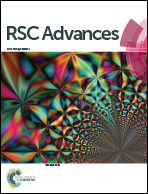Study of palladium and boric acid ion co-doped Li3V2(PO4)3/C cathode material with high performance
Abstract
A palladium and boric acid ion co-doped Li3V2(PO4)3/C composite was successfully synthesized by a simple method. A series of characteristics, such as its microstructures and electrochemical properties, were studied. The results show that the modified materials have relatively regular spherical particles and good electrochemical performances for cathode materials. It delivers a high special capacity of 159.2 mA h g−1 at 0.2C and 128.9 mA h g−1 at 5C in the voltage range of 2–4.3 V. After cycling at different rates, the initial discharge capacity retention rate was 97.5%. The enhanced electrochemical properties indicate that the modification method, using anions and cations to collaborative dope the material, effective to improve the electrochemical performance of the electrode material.



 Please wait while we load your content...
Please wait while we load your content...